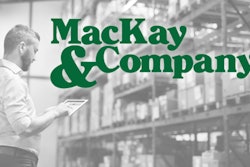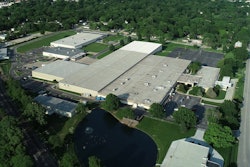
More than 65 percent of distributors responding to a 2019 Trucks, Parts, Service reader survey said their company’s performance in 2019 was better than 2018. Twenty-four percent said 2019 was significantly better (more than 10 percent), while 43 percent reported 2019 was slightly above (2-10 percent) their company’s 2018 performance.
That’s not to say the past two years have been all roses and rainbows. The aftermarket faced its share of hurdles, including a weaker economy in parts of North America, increased competition caused by the Internet, an underperforming oil industry, an ongoing employment shortage and the United States’ ongoing trade wars.
One-third of respondents said 2019 was equal to or below 2018, according to the survey. Nearly 20 percent reported last year was equal to company results the previous year (plus/minus 2 percent). Nine percent said slightly below (2 to 10 percent) and 5 percent reported significantly lower (more than 10 percent) performance in 2019 compared with 2018.
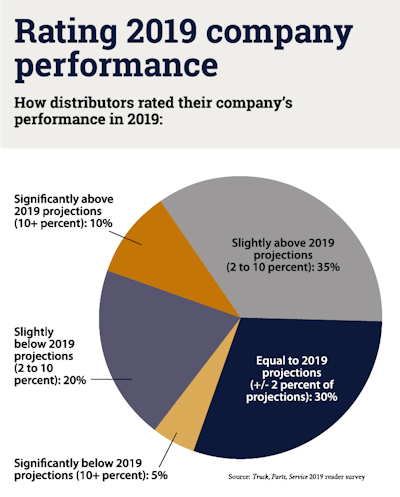 Click to enlarge.
Click to enlarge.The top current business concern among distributors are the availability of technicians, changing technologies and competition from dealers at 22 percent, 13 percent and 10 percent, respectively, according to the survey. (Editor’s note: The technician shortage in the aftermarket and dealer channels will be addressed in Part VI of the TPS State of the Industry report.)
MacKay & Company’s Aftermarket Index is looking like it will end up flat in 2019 when compared with the previous year, John Blodgett, vice president of sales and marketing, MacKay & Company, said in the latter half of October.
The index started last year 5 to 6 percent above 2018, but has trended downward throughout the year, according to the company’s Aftermarket Index, which tracks component supplier sales performance on a monthly basis.
At the start of 2018, the index was up 7.4 percent over 2017 and it grew for most of the year, Blodgett said. “In the last four months or so of 2019, where we’re comparing to a growing number last year, we seem to be flattening out and might go a little negative before the end of 2019, but we are comparing to a very strong 2018,” he added.
For HDA Truck Pride, 2018 and 2019 were “phenomenal” growth years, with strong increases over 2017, says Tina Hubbard, chief operating officer.
“A strong economy coupled with category expansions have been the key influencers for HDA Truck Pride’s growth. Members are embracing new opportunities for growth, like aftertreatment and air disc brakes, Hubbard says.
Hubbard says the organization’s focus on service and technology has enhanced its approach to the market. She adds the existing membership is solid and has been attracting new members.
“Working with technology and remote diagnostics and utilizing the data we have regarding procurement have all played significant roles in our growth,” Hubbard says.
VIPAR Heavy Duty says it and its family of companies have been performing at or above the projected industry market growth rate over the last few years and has had consecutive years of store count growth organically, with existing distributors adding locations, and through the addition of new distribution companies.
“Distributor consolidation within the aftermarket has continued; however, we have been able to limit the impact on our distribution network with a variety of strategies, including the introduction of our Business Resource Center,” says Chris Baer, CEO and president, VIPAR Heavy Duty.
The Business Resource Center is an online repository of information, best practices and resources to support growth strategies and long-term business planning options, designed to help distributors achieve their goals at all stages of their business. The resource center includes an In-Network Buyers listing that connects stockholder distributors with in-network distributors interested in potential investment or acquisition.
VIPAR Heavy Duty also introduced the PARTSPHERE digital ecosystem. The launch of the first three platforms facilitates the electronic transmission of orders; the collection, storage and syndication of product information; and increased file sharing capabilities.
DeCarolis Heavy Duty Parts is reporting steady revenue growth in 2018, a trend that has continued through 2019. Year-to-date revenue of the parts provider with eight locations in New York State was nearly 15 percent as of early November, according to General Manager Greg Rawleigh. “The growth has been steady across all product lines,” Rawleigh adds.
A back-to-basics campaign focusing on customer satisfaction was the focus of Point Spring & Driveshaft Co. the last two years. The goal resulted in a record breaking 2018 and continued strength in 2019, says Sean Ryan, president and treasurer.
“Setting the goal is the easy part. But we backed up that goal with additional investments in inventory, equipment, vehicles, people, whatever is needed to delight our customers and make them actually excited to buy from us,” Ryan says.
Point Spring has eight locations in Ohio, Pennsylvania and West Virginia. Despite the company’s success, Ryan says poor performance by the oil and gas market has affected the company locations serving it.
“Unfortunately that market has been a drag on our overall results. It’s an area where the booms and busts are much more pronounced than any other markets we service and are likely to continue to be that way,” he says. “Fortunately, we’ve experienced strength in the rest of our market areas that have offset those headwinds.”
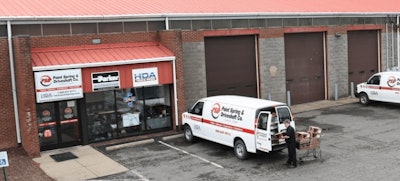 A back-to-basics campaign focusing on customer satisfaction was the focus of Point Spring & Driveshaft Co. the last two years.
A back-to-basics campaign focusing on customer satisfaction was the focus of Point Spring & Driveshaft Co. the last two years.Parts sales remain strong for Point Spring, Ryan says, as the company is constantly evaluating new opportunities to have the highest quality parts and has built strong relationships with its Tier One parts supplier partners. Ryan says parts categories that have been in higher demand include sensors and aftertreatment components.
“Service has been consistent for us,” Ryan says. In 2019, “Point Spring started an initiative to start viewing and evaluating service as an entirely different business. The metrics and key performance indicators are totally different than distribution.”
For Harman Heavy Vehicle Specialists, which has locations in Cambridge and Woodstock serving the greater part of southwestern Ontario, Canada, 2018 and 2019 were solid years, but fairly flat from a sales growth perspective.
“We saw an increased demand on what we consider core products lines [such as] brakes, suspension, lighting and electrical, etc.,” says Ian Johnston, owner and vice president. “But that demand was also countered by fierce competition in our marketplace, which led to a downward pressure on margin production in 2019 versus 2018.”
Johnston adds service has been increasing steadily.
“In our service department we saw a 10 percent increase in overall business in 2019 and our drive-line manufacturing/repair department had amazing growth — in the plus-35 percent range from 2018 to 2019,” he says.
“Service is definitely in demand these days as there is still not enough service capacity to handle the amount of trucks and trailers requiring repairs, but doing these repairs, especially on newer pieces of equipment, definitely requires some investment by the shop from a technology and equipment standpoint,” Johnston says.
Michael Callison, CEO and president of Des Moines, Iowa-based Midwest Wheel Companies, says the company’s parts sales, as of November, is up 8 percent year to date, compared with the same period in 2018.
“We’ve had a couple new product launches this year. We’ve had good luck with sensors, specifically. As trucks feature more technology, we’re making sure we’re staying on top of that,” Callison says.
Midwest Wheel has five locations throughout Iowa and one in Kansas City, Mo. Callison says parts sales performance is about the same among all the stores.
The Kansas City location is the only one to offer service and Midwest Wheel is growing its service offering there. They hired a new shop manager and are growing with additional techs.
“We had an opportunity personnel-wise and it just made sense. It has worked out well for us,” Callison says.
Like Point Spring, some of Weldon Parts’ locations depend on the oil industry. While 2018 was a good year for the company, Operations Manager Bryan Matzek says 2019 was a challenge because a number of its locations were adversely affected by the troubled oil business.
“We’re not in one market specifically. When the oil business tanks, thankfully we have our other stores helping us out overall as a company,” Matzek says. Weldon Parts has 17 locations in Arkansas, Florida, Nebraska, Oklahoma and Texas.
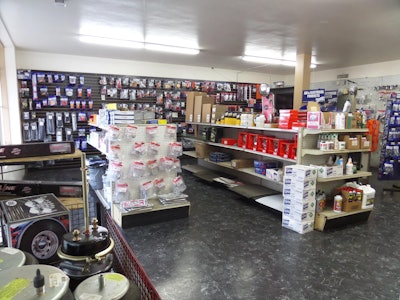 While Weldon Parts’ core business continues to be brakes and suspension, the company is diversifying by adding new product lines to its offering.
While Weldon Parts’ core business continues to be brakes and suspension, the company is diversifying by adding new product lines to its offering.While Weldon Parts’ core business continues to be brakes and suspension, Matzek says the company is looking to diversify by adding new product lines to its offering.
“Both [2018 and 2019] have been good years, with 2018 being better from an overall growth standpoint. The market certainly softened in the third and fourth quarters,” says Bill Nolan, president, PBS Truck Parts, which has four locations in Indiana and two CommPar locations in Michigan.
For Six Robblees’, its markets were flat in 2018, says President Andy Robblee. The aftermarket parts provider has 22 locations in Alaska, California, Idaho, Montana, Oregon, Washington and Wyoming.
The Internet, which makes information and parts more readily available, is one reason for the flat year, Robblee says, because some customers are willing to research parts versus relying on the experience, knowledge and service Six Robblees’ has been offering for more than a century.
Because of the Internet, “we’re competing against a bigger world. We’re competing against firms in the Midwest and East Coast we never had to compete with before. It’s a challenge for us to not only win at home, we have to figure out how do we compete in this changing market,” Robblee says.
He adds 2019 has been a much better year, “but we had to do it through acquisition. We made three acquisitions of small to midsize companies that have really added to the top line.”
John Bzeta, president, Fleet Brake Parts & Service, says Canada is a resource-based economy and a lack of oil pipeline construction is causing major damage to the Western Canadian economy. He says tariffs have had a lesser effect but an agreement regarding softwood lumber with the United States has affected the forestry industry. Eastern Canada has been more stable, but the overall economic growth is flat.
All of these factors have created a lack of confidence in the economy. “Consumer spending is down and businesses are increasingly unwilling to invest. As our business touches the entire economy, if our customers are slow, it affects our business,” Bzeta says.
Despite these challenges, Fleet Brake’s parts and service departments have been more than weathering the storm.
“Parts sales continue to do well as customers are repairing units rather than purchasing new units. In addition, parts complexity and SKU proliferation continue to increase,” Bzeta says. “Our service operations continue to be stable. Fleets outsourcing their maintenance has slowed down but major damage and complex repairs continue to keep our shops busy.”
(Editor’s note: Part II of the TPS State of the Industry report takes a look at distributors’ views of 2020.)

